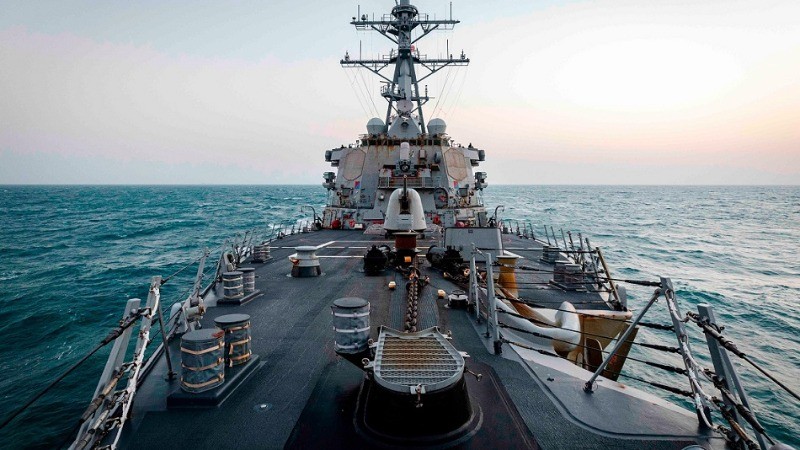
In a historic move, a Japanese warship has sailed through the Taiwan Strait for the first time, marking a notable shift in Japan's naval strategy. The JS Sazanami, a naval destroyer, navigated the waters between Taiwan and China from north to south on Wednesday, accompanied by ships from Australia and New Zealand.
The Japanese warship was en route to participate in military exercises in the South China Sea, signaling a significant departure from Japan's previous approach of avoiding the Taiwan Strait to prevent diplomatic tensions with China. Beijing considers the self-governed Taiwan and the surrounding strait as part of its territory, while Japan and other nations regard it as international waters.
So far, Japan, Taiwan, and China have not made official statements regarding the warship's passage. However, Chinese media reported that the Chinese military closely monitored and tracked the vessels throughout their journey.
The Taiwan Strait has increasingly become a focal point for naval activities by the US and its allies, who are keen to assert their right to freedom of navigation in the strategically important waterway. The strait, a major trade route, is used by nearly half of the world's container fleet. While the US and its allies view it as international waters, China claims sovereignty and jurisdiction over the strait.
The US Pacific Fleet has long been a consistent presence in the Taiwan Strait, but in recent years, it has been joined by navies from Canada, Australia, Britain, France, and most recently, Germany. Germany's recent passage of two navy ships through the strait marked the first time in 22 years that German naval vessels have taken this route, sparking criticism from China, which accused Berlin of heightening security risks.
These naval transits are seen as politically charged actions meant to signal to Beijing that Western nations and their allies do not recognize China’s claims over the strait. Japan's decision to join this pattern represents a significant shift from its historically cautious stance toward China.
Japan's chief cabinet secretary refrained from providing specific details about the naval operation but acknowledged the rising security concerns due to frequent airspace violations by Chinese military aircraft in recent months. Taiwan, meanwhile, reported an increase in Chinese military activity around the island but did not directly comment on Japan’s naval transit.
Experts believe that Japan’s move reflects a broader trend of increased naval presence by nations concerned about China's growing maritime assertions. According to Bec Strating, an international relations professor, Japan is responding to China's "grey zone" tactics in the East China Sea—measures aimed at gradually undermining rivals without direct military confrontation.
In recent weeks, tensions have escalated further, with China deploying an aircraft carrier near Japanese islands close to Taiwan and flying a spy plane into Japanese airspace, actions condemned by Tokyo as serious violations of sovereignty.
The recent naval activities in the Taiwan Strait underscore the growing concerns among regional and global powers over China's increasing assertiveness in the Asia-Pacific region. Leaders of the Quad nations—Japan, Australia, India, and the US—have pledged to strengthen maritime security cooperation to counter China’s influence in the region.